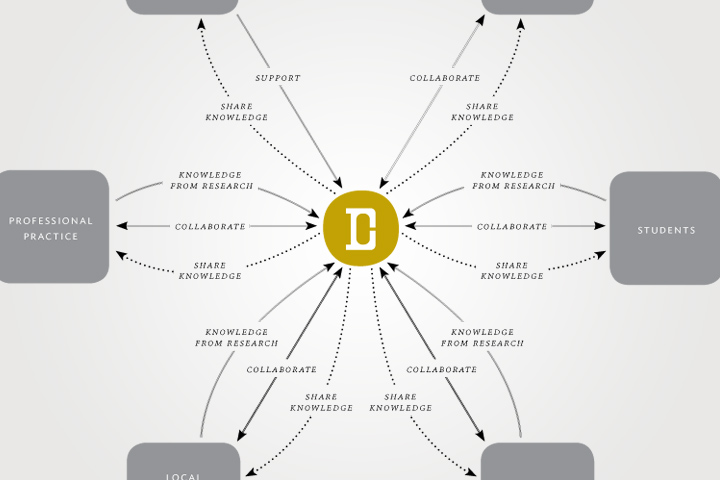Mapping A Design Ecosystem
A visualization of my design interactions.

Considering the many design hats I have been wearing lately (and will likely wear for quite some time) I started thinking through where I “fit” and how I engage with various groups. Being a designer, a visualization seemed like the most logical way to go. After many iterations (again, designer!), a map of my design ecosystem emerged.

My work began with identifying the groups and people with whom I interact, simplified down to benefactors, research partners, students, professional design practice, the community of scholars, and society at local, regional, national, and global levels. Once these were identified, I mapped out the interactions I have with each group. What resulted was a map that looks like a flower with a bite out of it (as well as some discoveries):
- I feel it is my duty to share my findings and knowledge with all groups, for their benefit. This is especially the case with benefactors where I figure if someone is going to invest in me I owe them a report on what their investment produced.
- Most groups are “researchable,” or better said, I can learn a great deal from students, professional practice, society and the community of scholars through conducting research into their unique pockets of expertise and experience.
- Collaboration is the glue that holds the ecosystem together. As the only two-way arrow, collaboration and co-creation with research partners, students, professional practice, society and the community of scholars is an opportunity for meaningful exchanges.
- My work is that of making connections. Because I wear many hats and connect the ecosystem at multiple points I have the ability to bridge gaps and to “translate” between disparate groups and viewpoints.
- Reflexivity is the engine. None of these interactions, discoveries and connections take place unless I reflect back on what I learn and make meaning of my experiences. The posts on this site, my journaling and recap discussions with others are evidence of the value I place on not just always forging ahead, but on reviewing the past and pinpointing significance.
Mapping out these pathways for interaction and identifying the names of the paths that connect was a valuable exercise in understanding how I go about my work. I am interested now to delineate the connections around the ecosystem in an effort to discover external connections—but that’s for another map at another time. Regardless of the shape of the visualization (daisy? upward-looking Pac Man?) I can say one thing for sure. . . the dignity, happiness, and well-being of people is my main driver.
2 Comments
Comments are closed. This post is no longer accepting new comments.
Nice diagram. Nice meeting you are Connecting Dots, so now I am part of the diagram.
It was great to meet you, too. Here’s to the work of strengthening the future of our discipline one dot connection at a time.